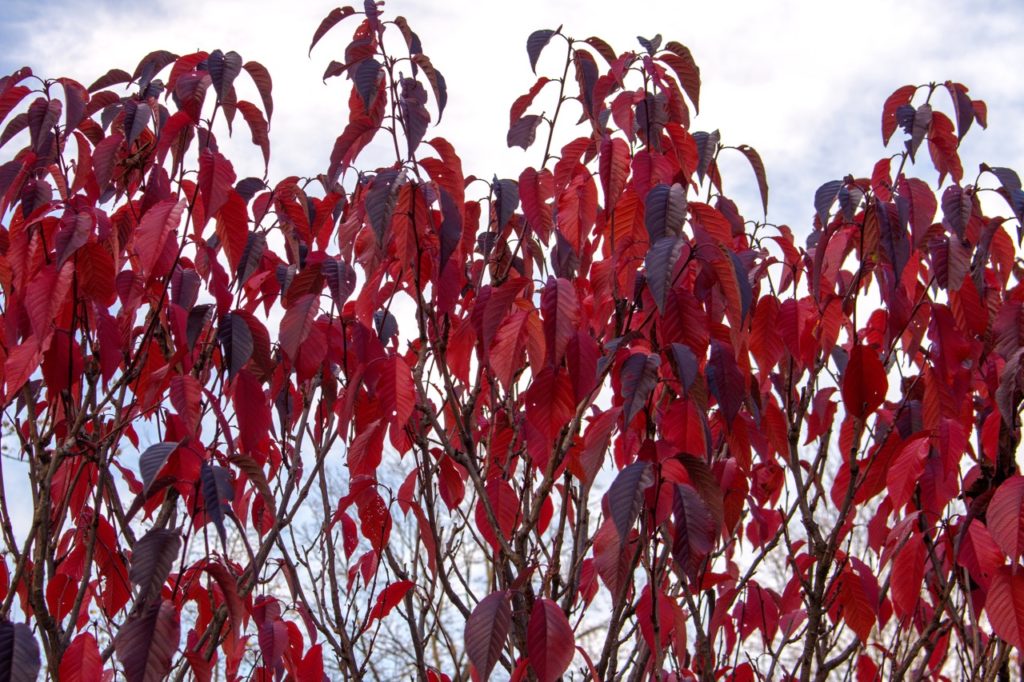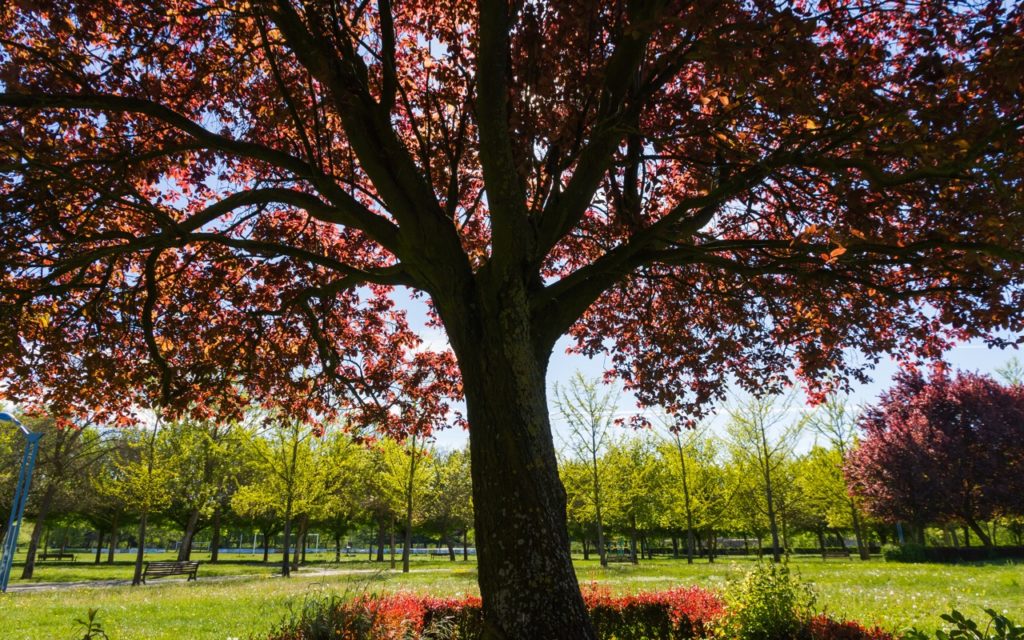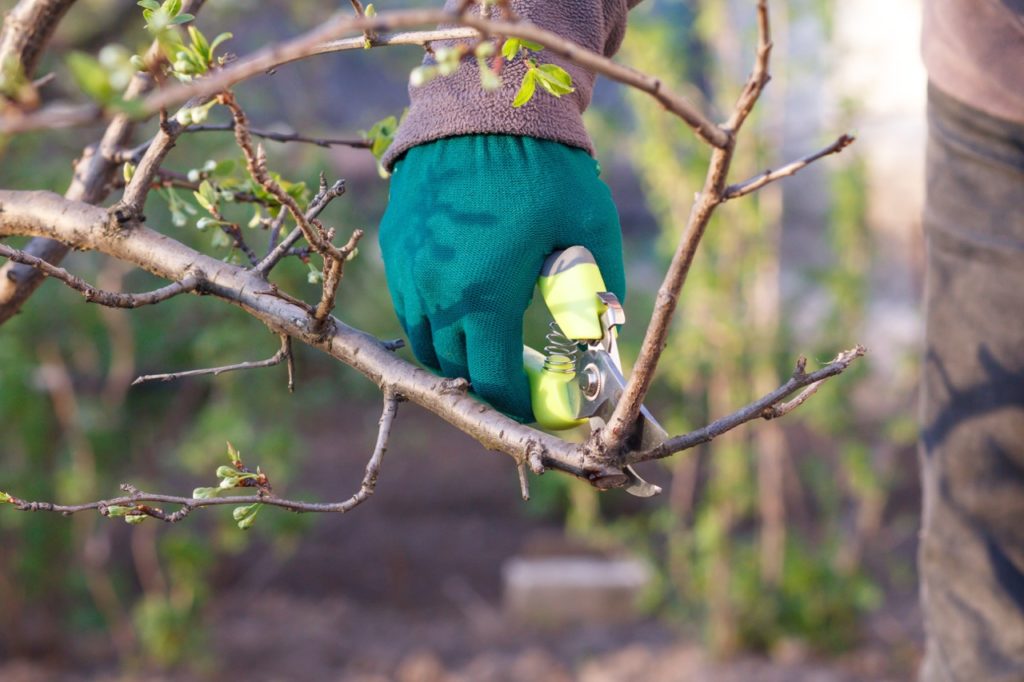Growing Purple-Leaf Cherry Plums: Trees Highly Prized For Their Ornamental Appeal

TREES > PRUNUS-CERASIFERA

Elizabeth is a Permaculture Garden Designer, Sustainability Consultant and Professional Writer, working as an advocate for positive change. She graduated from the University of St. Andrews with an MA in English and Philosophy and obtained a Diploma in Applied Permaculture Design from the Permaculture Association.
Reviewed By DAN ORI

Dan has over 27 years’ under his belt caring for plants and gardens. Working as a Horticultural Instructor and Consultant, he draws on a diverse range of experience that includes working as a Head Gardener, Tree Surgeon, Garden Centre Trouble Shooter, and writer of academic papers. Dan has a Level 3 Diploma in Horticulture and is currently a candidate for the RHS’s most prestigious award – The Master of Horticulture.
IN THIS GUIDE
PURPLE LEAF PLUM GUIDES
Purple-Leaf Plum Tree, Prunus cerasifera, is a wonderful ornamental tree that also has edible fruits.
This tree is a great choice for those who wish to have a beautiful and productive garden – the best of both worlds – since it will look great throughout the year and will also provide you with an edible yield.
Purple-leaf cherry plums are highly prized as garden trees because of their ornamental appeal.
There is a lot of variation in size between the species’ cultivars and the exact hue of the foliage throughout the year.

Often, the foliage will change colour significantly from spring through summer to autumn, giving a beautiful and exciting display that is never boring.
Prunus cerasifera is also a great choice because the deep purple fruits are attractive in their own right and can be eaten and enjoyed when ripe.1Prunus cerasifera. (n.d.). Plants for a Future. Retrieved March 23, 2023, from https://pfaf.org/user/plant.aspx?LatinName=Prunus+cerasifera
The small plums have thin skins and many have a deliciously sweet flavour, though some are sourer and best cooked with sweeteners.
In the UK, the fruits are not often borne in large quantities, but large crops can be produced every 4 years or so.
Overview
| Botanical Name | Prunus cerasifera |
| Common Name(s) | Purple-Leaf Plum / Cherry Plum |
| Plant Type | Tree |
| Native Area | Southeast Europe & West Asia |
| Hardiness Rating | H6 |
| Foliage | Deciduous |
| Flowers | White or pink flower blossom |
| When To Plant | October to March |
| Harvesting Months | June to September |
| When To Prune | June to September |
Sunlight
Preferred
Full Sun
Exposure
Exposed or Sheltered
Size
Height
8 – 12M
Spread
8 – 12M
Bloom Time
Spring
Soil
Preferred
Most fertile soils
Moisture
Moist but well-drained
pH
Any
P. cerasifera is native to Southeastern Europe and Western Asia, but it has naturalised in the UK, as well as in several other locations in North America and Southeastern Australia.2Cherry Plum (Prunus cerasifera). (n.d.). Woodland Trust. Retrieved March 23, 2023, from https://www.woodlandtrust.org.uk/trees-woods-and-wildlife/british-trees/a-z-of-british-trees/cherry-plum/
P. cerasifera is an ancestor of the cultivated plum and, in the wild, grows into small trees which can grow up to around 8-12m tall.

This is one of the first European trees to blossom as the flowers begin to open from mid-February onwards before the leaves emerge.
These trees are self-fertile but can also be pollinated by other Prunus varieties.
Common Varieties
A number of cultivars of this species have been selected for their purple foliage, such as ‘Atropurpurea’, ‘Pissardi’ and ‘Nigra’ – which also has an RHS Award of Garden Merit.

‘Thundercloud’, with deep red-purple leaves, the slightly smaller ‘Krauter Vesuvius’, ‘Newport’ with bronze purple leaves which change to red-purple in the autumn, and the dwarf variety ‘Purple Pony’ are some other options to consider.
Where To Grow
Purple-leaf plum trees require well-drained yet moisture-retentive soil.
They can cope with some light shade but will perform best and fruit far better in full sun.
While usually grown in the ground, smaller cultivars can also potentially be grown in large containers.
It is H6 hardy and will easily survive winter conditions throughout the UK.

Ideally, these trees prefer rich and relatively loamy soil which has an acidic to neutral pH, though they can also grow in moderately alkaline conditions.
They may struggle where the soil is too compacted and, since they are shallow-rooted, should not be grown where these roots will be disrupted.
They can cope with an exposed location but may perform best in a more sheltered site.
These trees are typically grown as stand-alone specimen trees in gardens, but they can also be interesting additions to a woodland garden with other trees that have varied and attractive foliage.
Guild Planting
Even when grown as an ornamental tree, P. cerasifera, like other fruit trees, will benefit from careful consideration of the plants that surround it.
Creating a guild of beneficial companion plants around trees within this genus can help in organic pest control, beneficial wildlife attraction and maintaining soil health and fertility.

Like other plums and cherries, purple-leaf plum trees require pollinators for a good fruit set, so it is particularly important to make sure that sufficient pollinators are around early in the year when these trees are in blossom.
Prunus trees can also be prone to pest problems, which can be mitigated at least to a degree by the inclusion of plants which repel, confuse or distract them in surrounding guilds.
How To Plant Purple-Leaf Plums
Purple-leaf plum trees can be planted as bare-root trees over the dormant period in the late autumn, winter or early spring.
Pot-grown trees can also be purchased and planted year-round, but planting in extremely wet or dry conditions should be avoided.
Dig a hole large enough to accommodate the roots and consider adding mycorrhizal fungi, which can aid establishment in certain situations.3Mycorrhizal Fungi. (n.d.-b). Science Direct. https://doi.org/10.1016/b978-012370605-8.50009-8

Make sure that the tree is buried to the same depth that it was previously and that a graft point is above soil level.
Gently firm the soil around the tree and water it in well.
Add a mulch of organic matter around it, but take care not to mound this around the trunk, as this can cause it to rot.
Prunus Cerasifera Care
Purple-leaf plum trees require some care until they are established, but afterwards, they can be a great choice for a relatively low-maintenance garden.
Watering
Water well until the tree becomes established and during prolonged periods of drought.
Rainfall will usually be sufficient once the tree has become established.
Mulch should help to retain soil moisture and reduce watering needs.
Feeding
Replenish the organic mulch each spring for slow-release fertility.
Consider adding guild plants to chop and drop (such as comfrey, for example).
Trees grown in the ground are unlikely to require additional feeding, though when growing smaller cultivars in pots, some organic liquid feed may keep the tree in optimal health.
Pruning
P. cerasifera, like other plums and cherries, are best pruned lightly, and may not require much pruning at all.

Hard pruning is not usually a good idea and any pruning that is undertaken should be undertaken after harvest in a dry week but not during drought conditions, which will normally be in June to September in the UK.
Later pruning can increase the likelihood of silver leaf and other fungal infections.
Common Problems
As mentioned above, Prunus can benefit from companion planting for natural pest control.
Fungal and bacterial diseases are also common issues for these trees, which may be affected by pocket plum, bacterial canker, blossom wilt, brown rot and silver leaf.
“The fungal disease silver leaf (Chondrostereum purpureum) is the main reason we prune during summer in dry (not drought) conditions, as the spores are not normally present in a dry June to September summer,” shares Master Horticulturist Dan Ori.

Keep the trees as healthy as possible to reduce the chances of a problematic infection by maintaining fertility, meeting water needs and pruning lightly and at the correct time.
Remain vigilant and remove any infected material as soon as it becomes evident to reduce the chances of its spread.
While it is not the most long-lasting tree you could choose for your garden, the purple-leaf plum tree’s attractive foliage and appealing fruits mean that this can still be a great choice in many settings.
References
- 1Prunus cerasifera. (n.d.). Plants for a Future. Retrieved March 23, 2023, from https://pfaf.org/user/plant.aspx?LatinName=Prunus+cerasifera
- 2Cherry Plum (Prunus cerasifera). (n.d.). Woodland Trust. Retrieved March 23, 2023, from https://www.woodlandtrust.org.uk/trees-woods-and-wildlife/british-trees/a-z-of-british-trees/cherry-plum/
- 3Mycorrhizal Fungi. (n.d.-b). Science Direct. https://doi.org/10.1016/b978-012370605-8.50009-8
